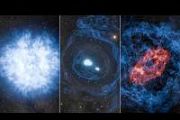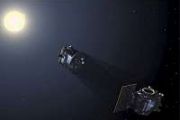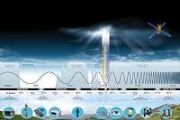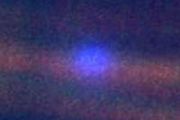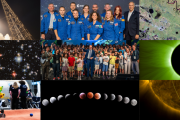
Copernical Team
Fly through Webb’s cosmic vistas
 Video:
00:43:26
Video:
00:43:26
On the launch anniversary of the NASA/ESA/CSA James Webb Space Telescope, ESA presents a unique compilation of zooms into stunning cosmic views.
So embark on a special journey: as if aboard a virtual spaceship, this video will take you through interstellar dives into the rich realm of our Universe. We will visit colourful nebulas and dynamic star nurseries in our own galaxy. Then venture beyond, to travel to the distant reaches of the cosmos and marvel at interacting galaxies and huge galaxy clusters.
The largest space telescope ever, Webb was launched on Christmas Day in 2021, on an
SpaceX defends airspace safety ahead of Florida Starship launch plans
Verifying that you are not a bot
Meet NASA's Artemis Closeout Crew, tasked with securing astronauts in their spacecraft
Verifying that you are not a bot
Russia's plans for a space station include 'recycling' its ISS modules
Verifying that you are not a bot
Engineering the first reusable launchpads on the moon
Verifying that you are not a bot
NASA's wideband technology demo proves space missions are free to roam
Verifying that you are not a bot
Japan's new flagship H3 rocket fails to put geolocation satellite into orbit
Verifying that you are not a bot
Year in images 2025

Year in images 2025
Our year through the lens: a selection of our favourite images for 2025
Euclid’s galaxy garland
 Image:
Euclid image of galaxy NGC 646
Image:
Euclid image of galaxy NGC 646 PUNCH mission delivers sweeping new view of solar activity
 After less than a year in orbit, NASA's Polarimeter to Unify the Corona and Heliosphere (PUNCH) mission, built and led by Southwest Research Institute, is returning wide-field images that place the Sun's activity in the broader context of the inner solar system while tracking comets and major space weather events as they move outward from the Sun.
SwRI's Dr. Craig DeForest outlined the mis
After less than a year in orbit, NASA's Polarimeter to Unify the Corona and Heliosphere (PUNCH) mission, built and led by Southwest Research Institute, is returning wide-field images that place the Sun's activity in the broader context of the inner solar system while tracking comets and major space weather events as they move outward from the Sun.
SwRI's Dr. Craig DeForest outlined the mis 














